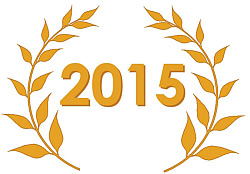Remote Sensing Best Paper Award for the Year 2015
- Article Award:
- 1st PrizeHartmut Boesch, David Baker, Brian Connor, David Crisp and Charles MillerGlobal Characterization of CO2 Column Retrievals from Shortwave-Infrared Satellite Observations of the Orbiting Carbon Observatory-2 MissionRemote Sens. 2011, 3(2), 270-304; doi:10.3390/rs3020270Available online: https://www.mdpi.com/2072-4292/3/2/270
- 2nd PrizeCurtis Edson and Michael G. WingAirborne Light Detection and Ranging (LiDAR) for Individual Tree Stem Location, Height, and Biomass MeasurementsRemote Sens. 2011, 3(11), 2494-2528; doi:10.3390/rs3112494Available online: https://www.mdpi.com/2072-4292/3/11/2494
- 3rd PrizeAndrea S. Laliberte, Mark A. Goforth, Caitriana M. Steele and Albert RangoMultispectral Remote Sensing from Unmanned Aircraft: Image Processing Workflows and Applications for Rangeland EnvironmentsRemote Sens. 2011, 3(11), 2529-2551; doi:10.3390/rs3112529Available online: https://www.mdpi.com/2072-4292/3/11/2529
- Review Award:
- 1st PrizeClaudia Kuenzer, Andrea Bluemel, Steffen Gebhardt, Tuan Vo Quoc and Stefan DechRemote Sensing of Mangrove Ecosystems: A ReviewRemote Sens. 2011, 3(5), 878-928; doi:10.3390/rs3050878Available online: https://www.mdpi.com/2072-4292/3/5/878
- 2nd PrizeThomas Blaschke, Geoffrey J. Hay, Qihao Weng and Bernd ReschCollective Sensing: Integrating Geospatial Technologies to Understand Urban Systems—An OverviewRemote Sens. 2011, 3(8), 1743-1776; doi:10.3390/rs3081743Available online: https://www.mdpi.com/2072-4292/3/8/1743
References
- Boesch, H.; Baker, D.; Connor, B.; Crisp, D.; Miller, C. Global characterization of CO2 column retrievals from shortwave-infrared satellite observations of the Orbiting Carbon Observatory-2 Mission. Remote Sens. 2011, 3, 270–304. [Google Scholar] [CrossRef]
- Edson, C.; Wing, M.G. Airborne Light Detection and Ranging (LiDAR) for individual tree stem location, height, and biomass measurements. Remote Sens. 2011, 3, 2494–2528. [Google Scholar] [CrossRef] [Green Version]
- Laliberte, A.S.; Goforth, M.A.; Steele, C.M.; Rango, A. Multispectral remote sensing from unmanned aircraft: Image processing workflows and applications for rangeland environments. Remote Sens. 2011, 3, 2529–2551. [Google Scholar] [CrossRef]
- Kuenzer, C.; Bluemel, A.; Gebhardt, S.; Quoc, T.V.; Dech, S. Remote sensing of mangrove ecosystems: A review. Remote Sens. 2011, 3, 878–928. [Google Scholar] [CrossRef]
- Blaschke, T.; Hay, G.J.; Weng, Q.; Resch, B. Collective sensing: Integrating geospatial technologies to understand urban systems—An overview. Remote Sens. 2011, 3, 1743–1776. [Google Scholar] [CrossRef]
© 2015 by the authors; licensee MDPI, Basel, Switzerland. This article is an open access article distributed under the terms and conditions of the Creative Commons Attribution license (http://creativecommons.org/licenses/by/4.0/).
Share and Cite
Thenkabail, P.S. Remote Sensing Best Paper Award for the Year 2015. Remote Sens. 2015, 7, 5370-5372. https://doi.org/10.3390/rs70505370
Thenkabail PS. Remote Sensing Best Paper Award for the Year 2015. Remote Sensing. 2015; 7(5):5370-5372. https://doi.org/10.3390/rs70505370
Chicago/Turabian StyleThenkabail, Prasad S. 2015. "Remote Sensing Best Paper Award for the Year 2015" Remote Sensing 7, no. 5: 5370-5372. https://doi.org/10.3390/rs70505370
APA StyleThenkabail, P. S. (2015). Remote Sensing Best Paper Award for the Year 2015. Remote Sensing, 7(5), 5370-5372. https://doi.org/10.3390/rs70505370




